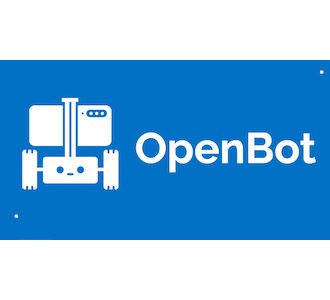| OpenBot - SmartPhones Become Robots |
| Written by Harry Fairhead | |||
| Sunday, 30 August 2020 | |||
|
If you, like a lot of people, have a box full of last year's Android phones and can't think of what to do with them - why not build a robot? They have more power than desktop of a few years ago and are quite capable of running AI software. Oh and did I mention that you can be up and running for $50. I've tried a few projects to repurpose older mobile phones, but they mostly had problems - this one seems like a really good idea. Matthias Muller and Vladlen Koltun, both of Intel Labs, have put together a design for a 3D-printed robot that uses an old phone as its brain. They think that it should cost around $50 for a one-off build. The bill of materials seems to confirm this: Component Quantity Unit Price Bulk Price Of course, you have to have a 3D printer, or access to one. It is a four-wheel robot with the motors on each side working together and hence differential steering is the order of the day. There is a big spring-loaded clip for the phone: The electronics are simple. An Arduino Nano does the work of controlling the motors via a dual H-Bridge, making it possible to turn the wheels on each side forwards or backwards. An optical encoder on the wheels and a speed sensor makes it possible to track the number of times the wheels have turned and hence do some dead-reckoning optometry. Perhaps the clever part is to allow the Arduino to control the motors and sensors and pass data and commands to and from the Android phone. When I last attempted to design a phone-based robot the cost of a separate controller was high enough to make me try to find ways of using the phone to do the job. Yes there was a time before the Arduino and Raspberry Pi. Needless to say, this is a much better and easier approach. The Android phone is both powered and connected to the Nano via the USB socket - simple. The Arduino's software is simple, but the Android's can be as complex as you like - anything from simple apps to Tensorflow Object Detection. Of course, the phone has a built-in camera so that's sorted and it has GPS, accelerometer and magnetometer. Who needs any other sensors?! Here is a video of it person-following: The conclusion is: Our experiments have shown that a $50 robot body powered by a smartphone is capable of person following and real-time autonomous navigation. We hope that the presented work will open new opportunities for education and large-scale learning via thousands of low-cost robots deployed around the world. Smartphones point to many possibilities for robotics that we have not yet exploited. For example, smartphones also provide a microphone, speaker, and screen, which are not commonly found on existing navigation robots. These may enable research and applications at the confluence of humanrobot interaction and natural language processing. We also expect the basic ideas presented in this work to extend to other forms of robot embodiment, such as manipulators, aerial vehicles, and watercraft. Not to mention long distance 3G data links - it pays to remember that is it a phone. The mobile phone is a powerhouse of computational possiblity. It is a shame to let so many rot in cardboard boxes. Open Bot is open source and you can get all the software and 3D plans from GitHub. Free your old phone and build an Open Bot.
More InformationRelated ArticlesNow We Can All Build A SpotMicro To be informed about new articles on I Programmer, sign up for our weekly newsletter, subscribe to the RSS feed and follow us on Twitter, Facebook or Linkedin.
Comments
or email your comment to: comments@i-programmer.info |
|||
| Last Updated ( Sunday, 30 August 2020 ) |



